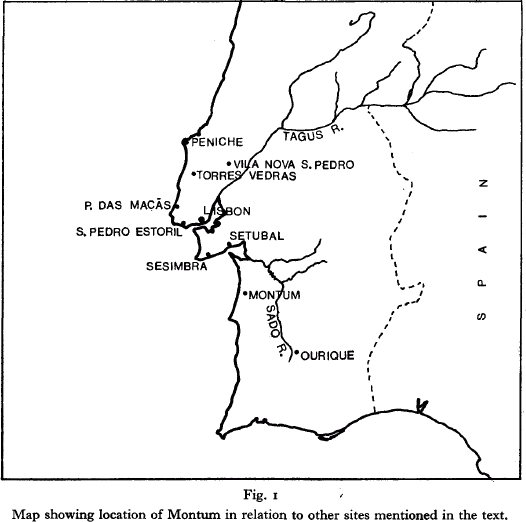Published online by Cambridge University Press: 27 May 2014
The megalithic tomb of Pedra Branca lies at Montum, on the west coast of Portugal about 140 kilometers south of Lisbon by road (fig. 1). The tomb is the first in Portugal to have yielded Beaker graves overlying earlier burials; prior to its discovery, no Beaker remains had ever been noted further south than Palmela, in the estuary of the Sado river, approximately 40 kilometers from Lisbon. The tomb is situated on the top of a small hillock 100 m above sea level, separated from the Atlantic Ocean by a fertile undulating plain about 5 km in width. The Lake of Melides lies to the north and, to the east, the hills of Grandola rise steeply to an altitude of 300 m; an expanse of rough terrain stretches to the south, ravined by various small streams which flow into the Lake of Santo André on the coast.

When the tomb was discovered by surveyors of the Geological Services of Portugal, it was already very badly damaged; all the orthostats had been broken for use in local construction and part of the circular covering mound had already been ploughed under. The Services therefore, decided that a salvage campaign was called for, and a team made up of the authors, was invited to carry it out with funds granted by the Calouste Gulbenkian Foundation.